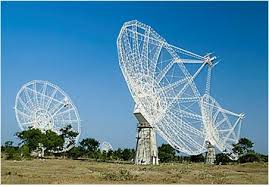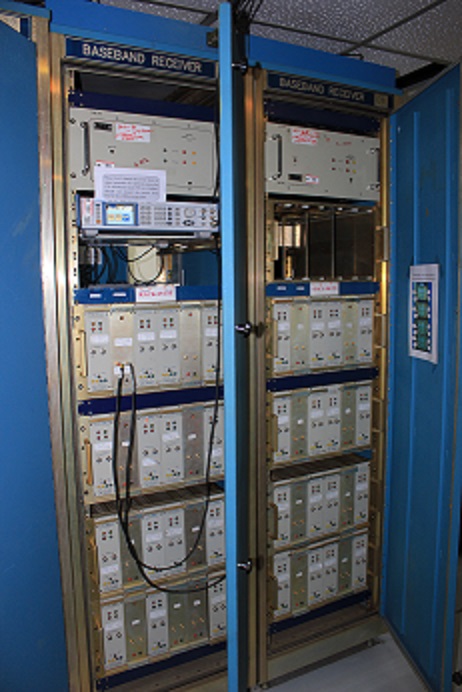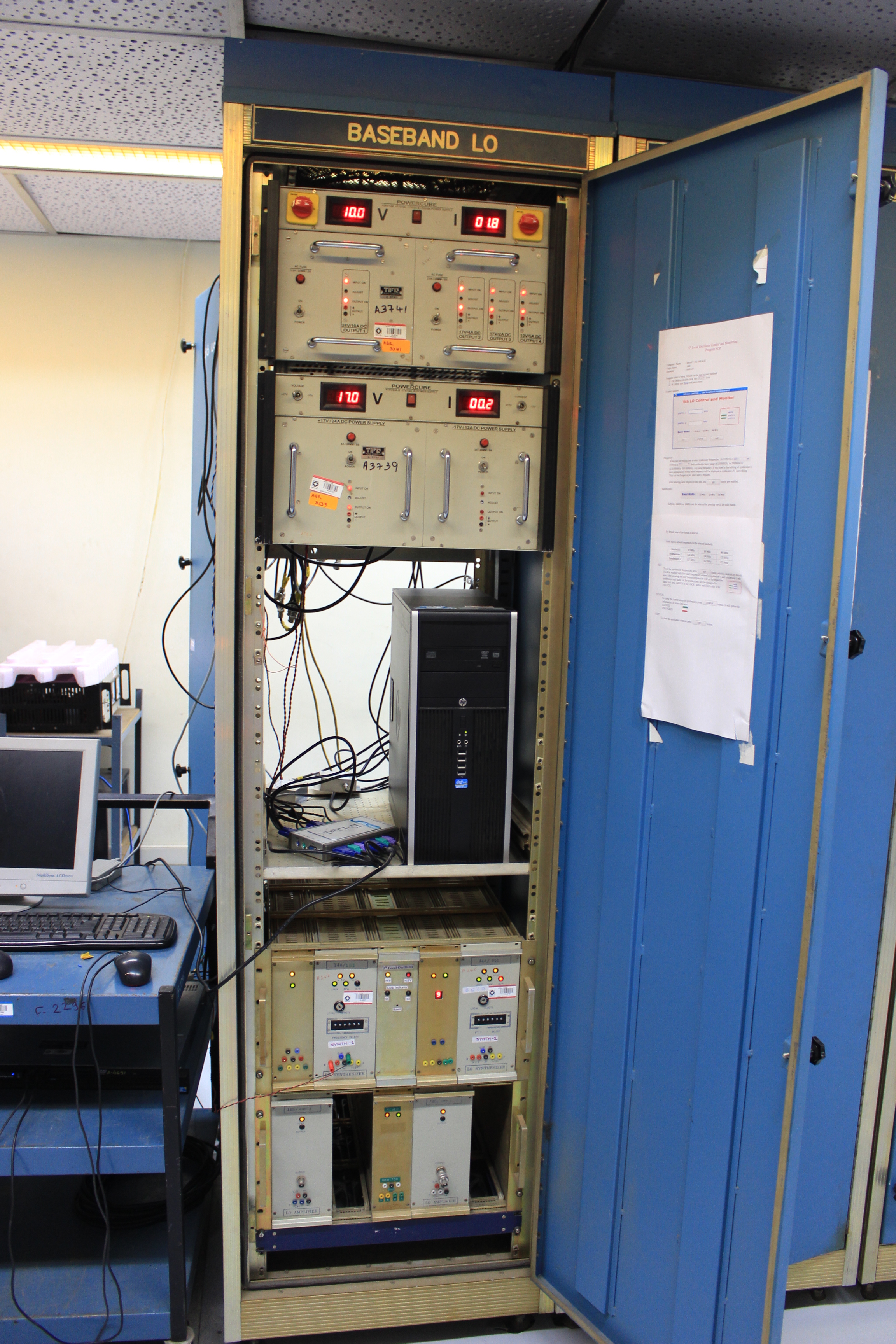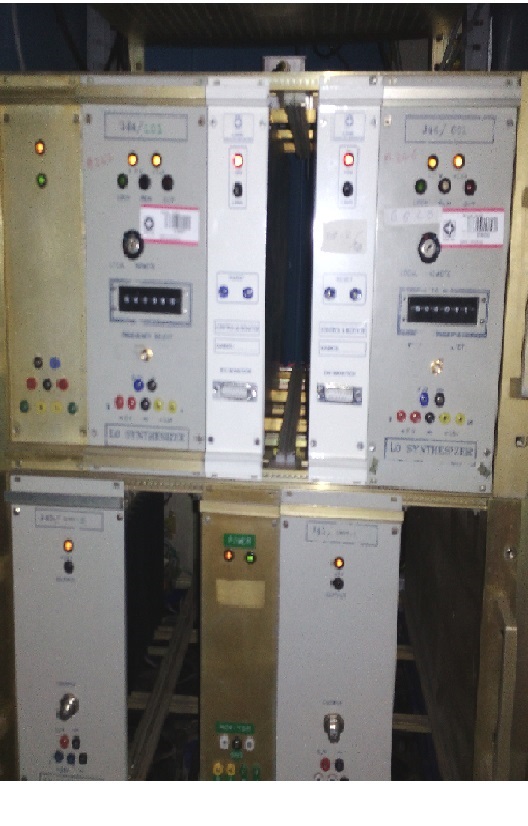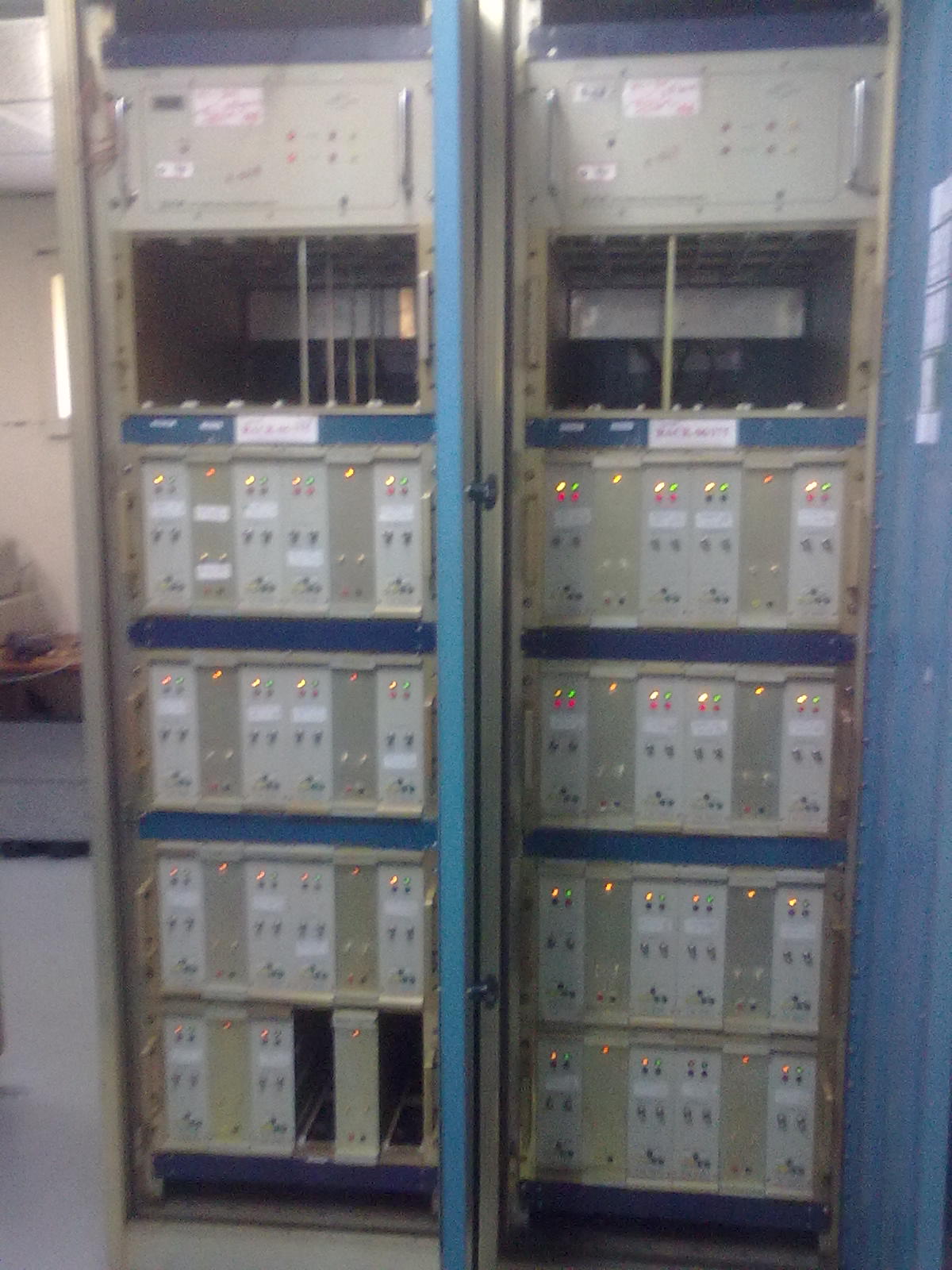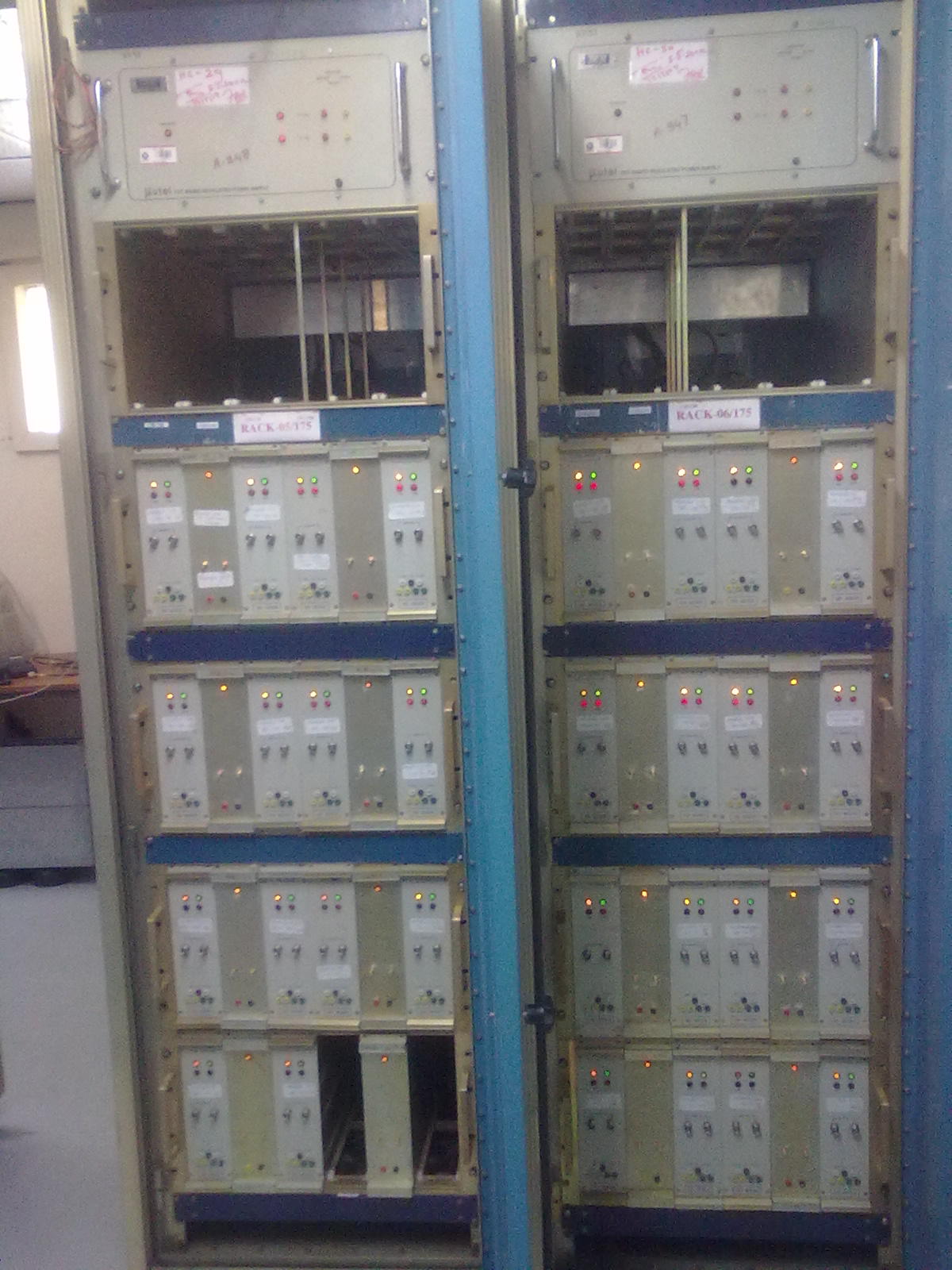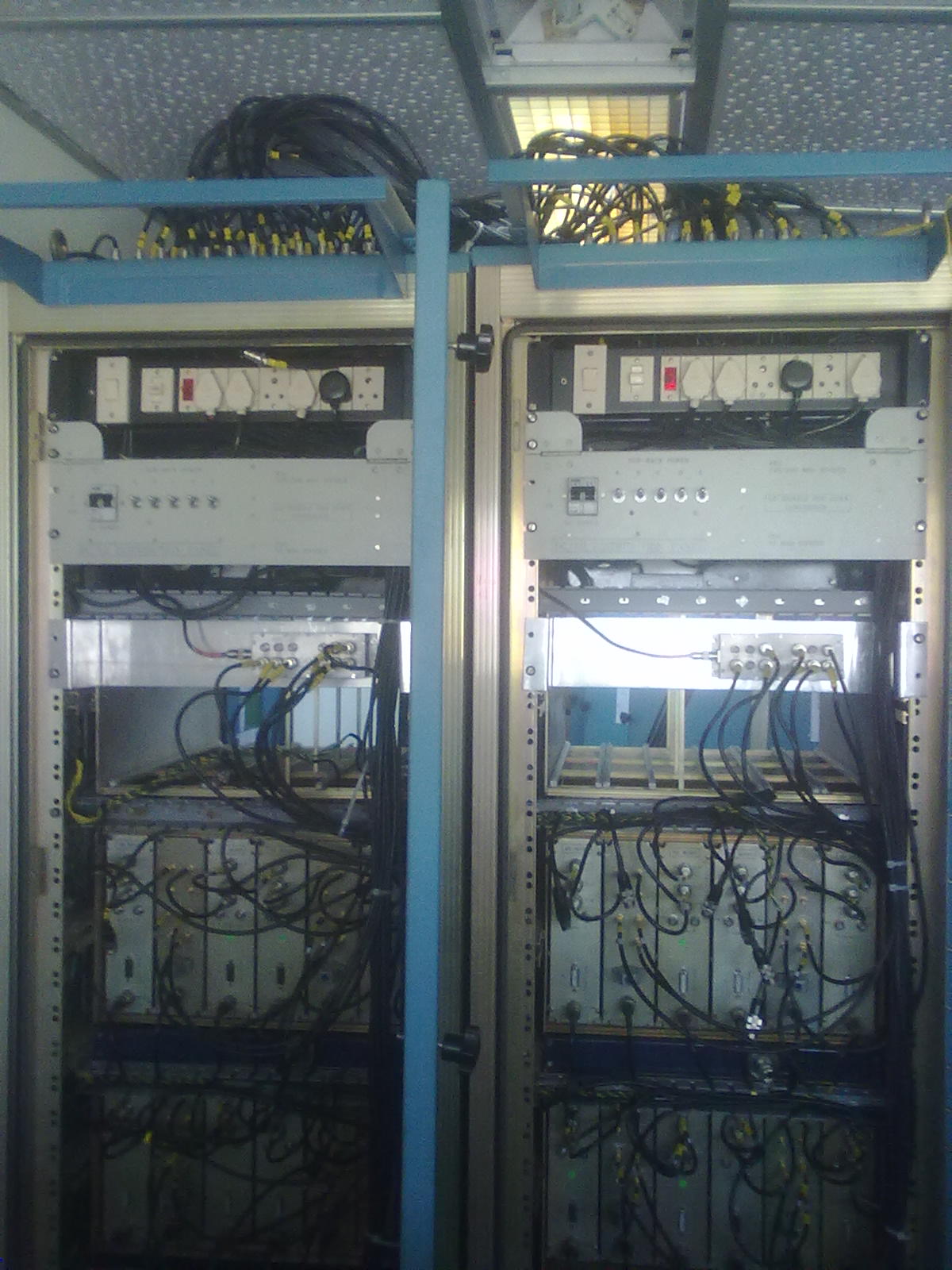Introduction
At the GMRT, the dual polarized RF signals from each antenna are processed through super heterodyne receivers and finally brought to a central location for further processing. The intermediate frequency signals from each antenna are then down-converted to baseband signals and fed to the digital signal processing backend. A baseband system is used for converting the IF signal to baseband signal to get a 32 MHz bandwidth from each polarization
Features
Converts IF signal to Baseband signal
Front panel Indicator for power Level
Specification |
||
|---|---|---|
| Input IF Signal Centre Frequency | CH1 : 130MHz & CH2 : 175MHz | |
| IF Signal Bandwidth (Max) | 32 MHz | |
| Input IF Power ( in each channel ) | -20.0 dBm | |
| Baseband Frequency Range | 32 MHz | |
| Baseband signal power level | 0dBm | |
| Baseband System Gain | 30dB |
BB LO Characteristics |
||
|---|---|---|
| Tunable Frequency Range | 50-90Mhz, 100Hz Step | |
| Frequency Tuning Controls | TTL , BCD Format | |
| Spurious Signal Levels | < -60 dBc Non-harmonic | |
| Phase Noise | -80 dBc/Hz at 100 Hz | |
| Switching Speedl | < 100 mS |
